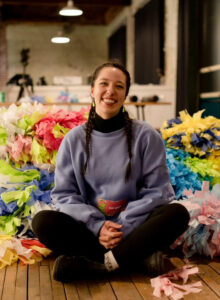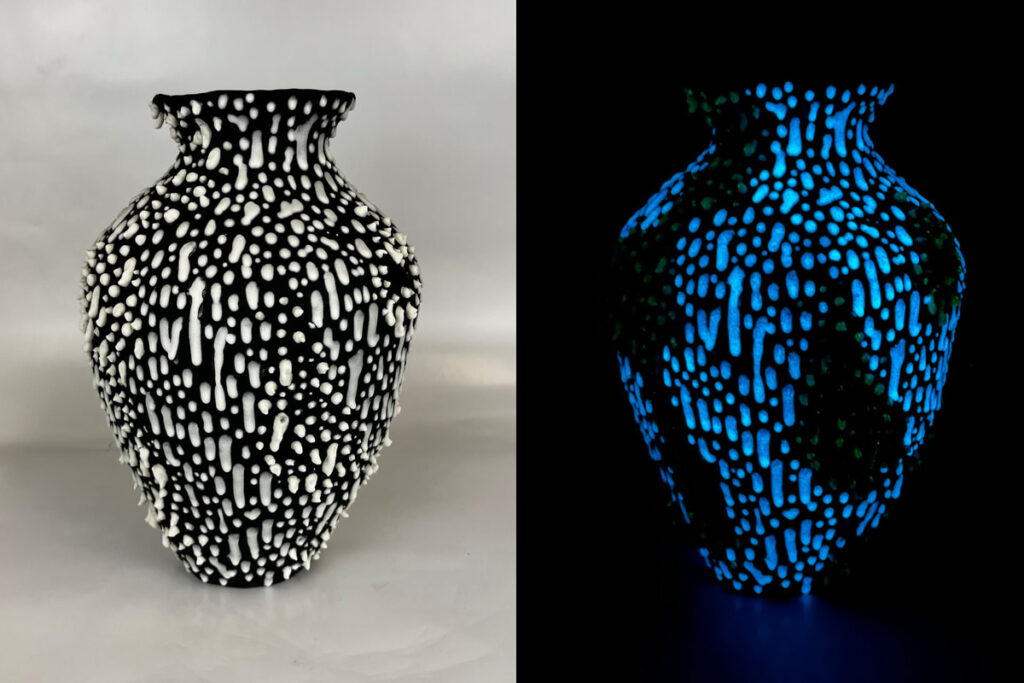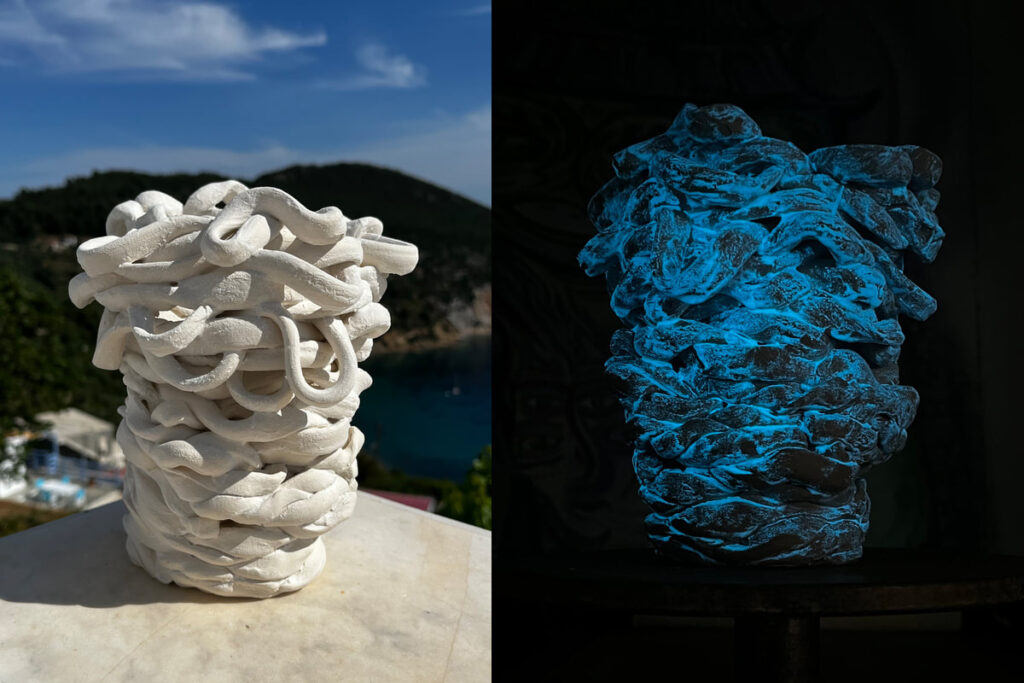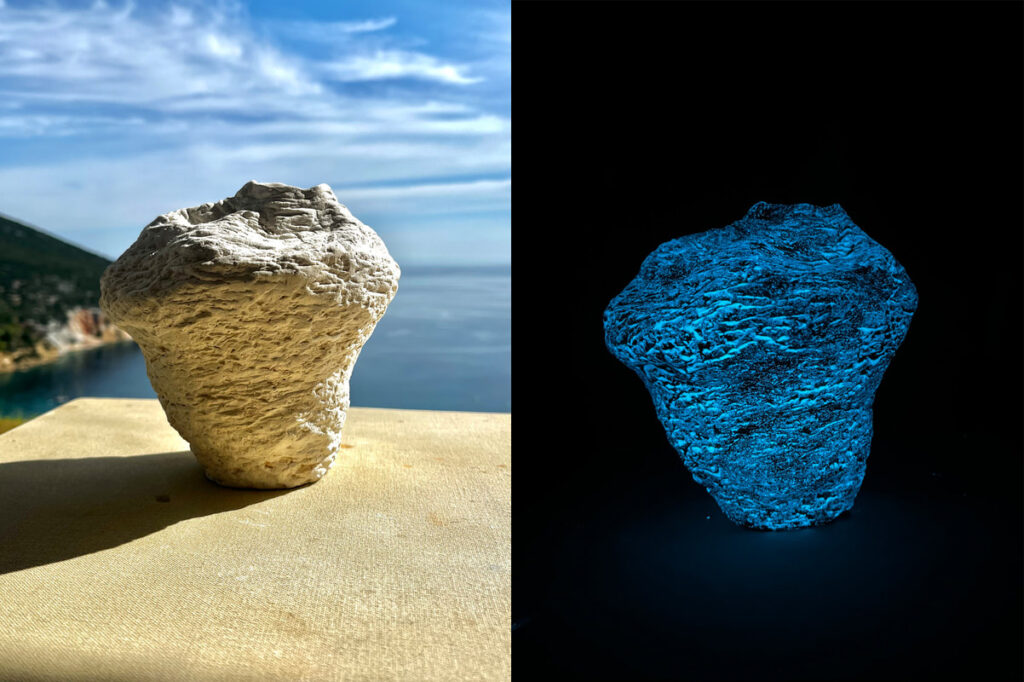Cat Lipiec
 Year of birth: 1998.
Year of birth: 1998.
Where do you live: Montreal.
Your education: BFA Concordia University, Major Ceramics.
Can you tell us more about your background and how you got started in ceramics
and fibre arts?
I have always been creating. When I was two I started drawing out the story of princess Catalina, named after the salad dressing, drawing out this character doing different mundane activities. A few years later my mother taught me how to knit, a skill passed down through generations. I continued to draw throughout my childhood and then applied to Canterbury High School’s visual arts program. Alongside my regular studies there I did classes in painting, drawing, printmaking, photography, and ceramics. As odd
as it sounds now, ceramics was my least favourite subject at the time. It wasn’t until our ceramics teacher changed halfway through my highschool years and Mrs. Glover came in and changed my life. Her passion was contagious and made me fall in love with ceramics. In my studies at Concordia University I used most of my electives to take all the necessary courses for a major in the Fibres and Material Practices too. I have been very lucky to be able to combine my passions over the years and in my studies which has led me and my work to where I am now.
 Cat Lipiec | Radiant Clay | Glazed Ceramic, 2024
Cat Lipiec | Radiant Clay | Glazed Ceramic, 2024
Can you walk us through the process of developing your custom fluorescent glazes? What were some of the biggest challenges you faced?
Getting it to work was by far the hardest part. I didn’t expect it to work. I won’t give too much away but I made countless tests and variations of different glazes and recipes I had found online and in books. I found some really helpful articles and used hyperglaze, a downloadable ceramic glaze software to create many recipes and experimented with different rare earth oxides which eventually led to my success.
How do you balance the technical aspects of ceramics with the creative process?
The technical stuff is fun! It’s fun to experiment and measure out ingredients and put it in the kiln to see what happens. Making glazes is a lot like baking in that way, but with ceramics I feel like an alchemist. It’s thrilling.
What was the initial inspiration behind the “Radiant Clay” project?
A few months ago I had a discussion with some of my classmates about where my work was going. I started making pieces with the intention of being light fixtures and I got to thinking about making glazes that could interact with different forms of light.
Can you describe the feeling when you finally achieved the desired fluorescent effect in your glazes?
Pure excitement. I couldn’t believe it worked if I’m being honest. After so many failed tests my expectations were low. And don’t get me wrong, I’m still working out kinks with the recipe and application of the glaze, there’s still lots of research to do, but I’m ecstatic that I have a successful starting point to keep working off of.
Are there any new techniques or materials you are excited to experiment with?
Yes, all of them. I know that sounds broad but there’s always something new to explore and discover with ceramics. I know ceramicists that have been in the field longer than I’ve been alive and they’re still learning new things everyday. Ceramics is all about experimenting and learning and embracing failure as part of that process. It’s a constant challenge which is part of the fun. Currently I plan to continue developing these fluorescent glazes in the upcoming months and start experimenting with 3d printing. I’d
also love to try Raku soon, I’ll just need to find the right facilities.
What has been the most rewarding aspect of your journey as an emerging artist so far?
The support from friends and family. I feel extremely lucky to have such great people rooting for me and supporting me on this journey.



Leave a Reply
You must be logged in to post a comment.